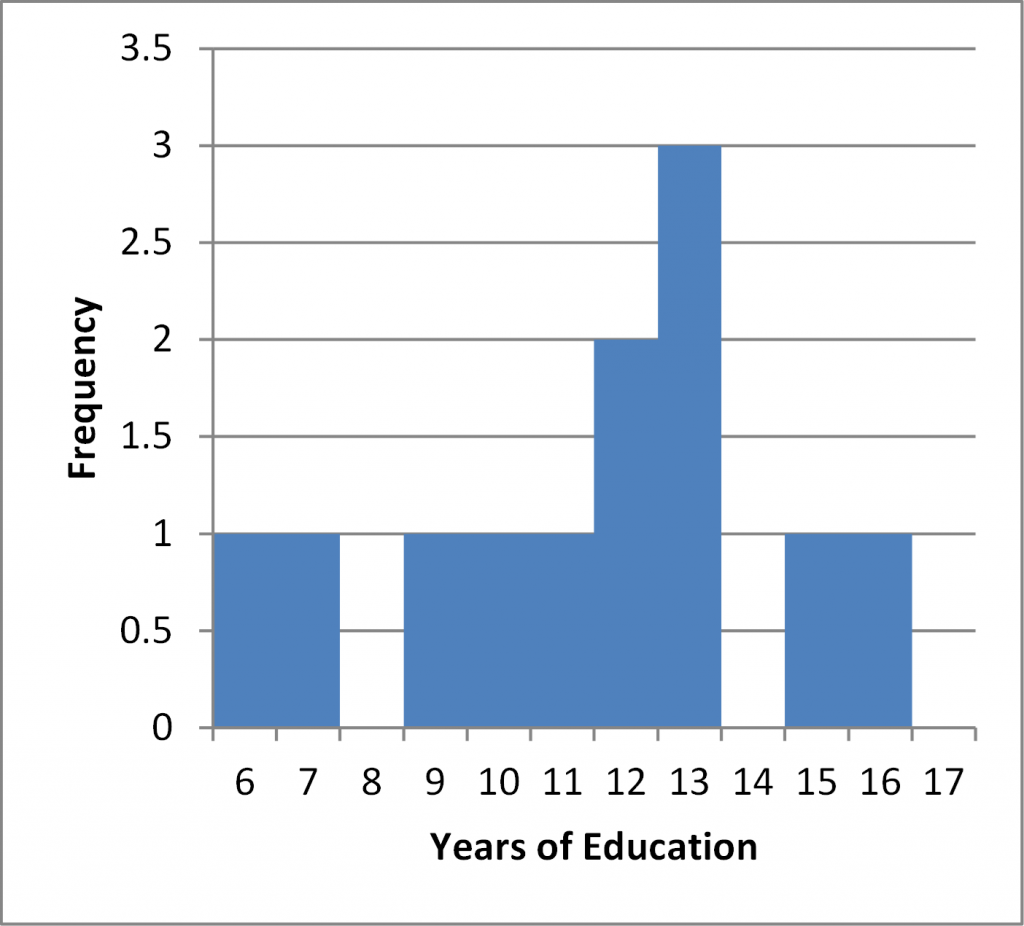Worksheet 2b.
These guided exercises will give you the opportunity to practice the techniques and apply the concepts you learned in Chapter 2b. You will need some paper, spreadsheet, or a tablet to work on the analyses.
- Data collected from hospital records reveal that the age of first hospitalization for psychosis for a sample of patients are:
18, 20, 21, 22, 23, 23, 24, 28, 28, 29, 32, 37, 39
a. Calculate the variance for this dataset using the formula below.
-
Steps to Calculate Variance
- Take the distance (“deviation”) of each score from the mean
- Square each distance to get rid of the sign (because some deviations will be negative)
- Add up all the resulting “squared deviations” to get Sum of Squares (SS)
- Divide by the number of scores
b. Calculate the standard deviation for this dataset using the formula below.
- The number of years of education for most members of the sample in the study of psychosis onset were:
6, 7, 9, 10, 11, 12, 12, 13, 13, 13, 15, 16
a. Calculate the variance for this dataset using the formula below.
- b. Calculate the standard deviation for this dataset using the formula below.


